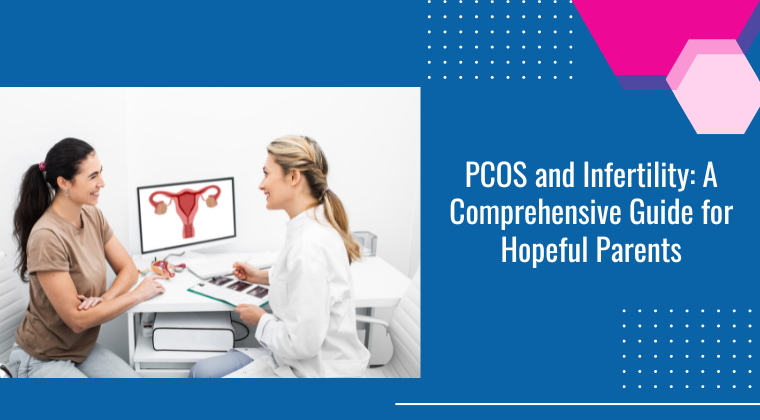
Male Infertility and Genetics: How Your Genes Affect Your Fertility
One of the major barriers in your parenthood journey can be infertility, which stems from various causes. In men, the problem is more common than

One of the major barriers in your parenthood journey can be infertility, which stems from various causes. In men, the problem is more common than

Polycystic ovary syndrome, commonly known as PCOS, is a condition where ovaries produce abnormal amounts of androgen. As a result, many small cysts filled with
ENDOWORLD HOSPITAL # 723, In front of Airport, Chikalthana, Aurangabad – 431007, Maharashtra, India.
Examination of the uterine cavity and cervical canal is called hysteroscopy.
Hysteroscopy is an important tool in the study of infertility, recurrent miscarriage or abnormal uterine bleeding. Diagnostic hysteroscopy is used to examine the uterine cavity and is helpful in diagnosing abnormal uterine conditions such as intrauterine fibroids, polyps and congenital malformations. Diagnostic hysteroscopy is usually performed on an outpatient basis. It can be performed either under general or local anesthesia. It is usually performed soon after menses because the uterine cavity is more easily evaluated and there is no risk of interrupting the pregnancy. Diagnostic hysteroscopy is usually done along with laparoscopy in infertility patients.
Diagnostic hysteroscopy is indicated in patients having infertility, abnormal uterine bleeding, recurrent miscarriages, etc. Diagnostic hysteroscopy is usually required in patients undergoing IVF- ICSI treatment. Operative hysteroscopy in done in patients with polyps, fibroids, septum, adhesions, misplaced copper T, foreign bodies in uterine cavity, etc.
During procedure the cervical canal is dilated serially with dilators so that the hysteroscope, a narrow lighted viewing instrument, is inserted through the cervix into the uterine cavity. Special distending fluid or carbon dioxide gas is instilled through hysteroscopic channels in the cavity. This fluid or gas distend the cavity, clears blood and mucus away and enables the surgeon to directly view the internal structure of the uterus.
Operative hysteroscopy can treat many of the abnormalities found during diagnostic hysteroscopy. Treatment may be performed at the same time or at a later date. Operative hysteroscopy is similar to diagnostic hysteroscopy except that a wider hysteroscope is used to allow operating instruments such as scissors, biopsy forceps, graspers or electrosurgical or laser instruments to be placed into the uterine cavity through the channels in the operating hysteroscope. Polyps, fibroids, septum or adhesions can be removed from inside the cavity. Endometrial ablation is a hysteroscopic procedure in which the endometrium is destroyed, can be used to treat excessive uterine bleeding when hysterectomy is not considered feasible.
Following hysteroscopy, some vaginal discharge and cramping may be experienced for few days. Sexual intercourse should be avoided for a few days or as long as bleeding occurs. Normal activities can usually be resumed within one or two days. If severe pain or bleeding is experienced, patient should immediately report to the hospital for further management.
As hysteroscpic surgery is a minimally invasive surgery it offers all it advantages like less pain, less bleeding, quick recovery, early resumption to work, single day stay, cosmetic and cost effective. Diagnosing and treating gynecologic disorders once required major surgery and days of hospitalization. Hysteroscopy and laparoscopy now allow gynecologists to diagnose and treat many of these disorders on an outpatient basis.
Complications of diagnostic hysteroscopy are rare and seldom life threatening. Team of surgeons and anesthesiologists take all required care during and after anesthesia, surgery to prevent the complications. Also if complications arise, the team diagnoses and treats the complications efficiently. Perforation of uterus is the most common complication, but the hole usually heals on its own without requiring additional surgery. Complications can occur in one or two out of every 100 operative hysteroscopy procedures, with uterine perforation being the most common. Some complications related to the fluids used to distend the uterus, include pulmonary edema (fluid in the lungs), breathing difficulties, blood clotting problems, decreased body temperature and severe allergic reactions. Complications related to surgical procedure include damage to intra-abdominal organs and hemorrhage. Severe or life threatening complications, however, are very uncommon.
Copyright @2025 Endoworld Hospital | Managed by GrowthPixel – Healthcare Marketing Agency | Privacy Policy | Terms & Conditions